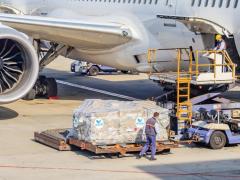Sodium-ion batteries have been officially classified alongside lithium batteries in the latest iteration of the Agreement Concerning the International Carriage of Dangerous Goods by Road (ADR 2025). ADR is a United Nations Economic Commission for Europe agreement followed by several countries, including South Africa. It serves as a basis for national standards, such as South Africa’s SANS 1518, which incorporates ADR requirements while allowing for local deviations. One of the major changes in ADR 2025, which came into effect on July 1, is a new subdivision which specifically addresses lithium- and sodium- ion batteries. It introduces specific rules for the transport of sodium-ion batteries. The International Air Transport Association is also tightening up conditions for the transport of rechargeable batteries. From January 1, 2026, lithium-ion batteries, whether loose, contained in equipment, packed with equipment or installed in vehicles, must be transported with a maximum state of charge (SoC) of 30%. Shipping lines are also taking greater precautions. Sodium-ion batteries are now included alongside lithium-ion batteries under several special provisions, which become mandatory from January 1, 2026. ER












